Suunto ZoneSense
-
@Sportsfreund It’s a measurement from the last workout this morning. A 10km run in my slow feel good zone. (Green zone from SUUNTO Zone Sense)
-
@Sportsfreund Next inconsistency I found is, when I ran in ZoneSense Green Zone, which means AEROBIC, the Suunto App classifies the activitie as an AEROBIC/ANAEROBIC activity, because the Heartrate often was in Heartratezone 3.
This is not the trueness when I run while using ZoneSense instead of the HR Modus. -
@Sportsfreund This is true, automatic tagging is based in HR and not in ZS. I think and hope, that eventually, they will let you chose between which base you want to use, HR or ZS.
-
@Sportsfreund Hashtags are HR zones based not ZoneSense.
-
@Sportsfreund to me yes.
-
@Sportsfreund said in Suunto ZoneSense:
@Sportsfreund and I can’t imagine the waves while the heartrate is constantly rising.
If I remember correctly in the Suunto video, where Zonesense is explained, they actually say, that the ups and downs of the Zonesense graph are not really significant , but the Zone alone (so if it’s in the green it’s in the green)
-
Hi,
does anyone know why the app is not showing a measured aerobic and anaerobic HR every time? Sometimes they show one, sometimes none, sometimes both.
Thanks, Matthias
-
@vuckowolf said in Suunto ZoneSense:
Hi,
does anyone know why the app is not showing a measured aerobic and anaerobic HR every time? Sometimes they show one, sometimes none, sometimes both.
Thanks, Matthias
Because maybe it doesn’t have enough data or maybe because they do not need to change. I mean, to detect the change between anaerobic and VO2max you need to be enough time in the red zone, the same for the aerobic one. But not always changes.
Besides, I have read that the thresholds are calculated during the first 45 minutes (I do not know if it includes the 10 minutes warm up or not) to avoid that the fatigue affecting to the calculations.
-
@thanasis said in Suunto ZoneSense:
@Brad_Olwin can you help me with why this happens ?
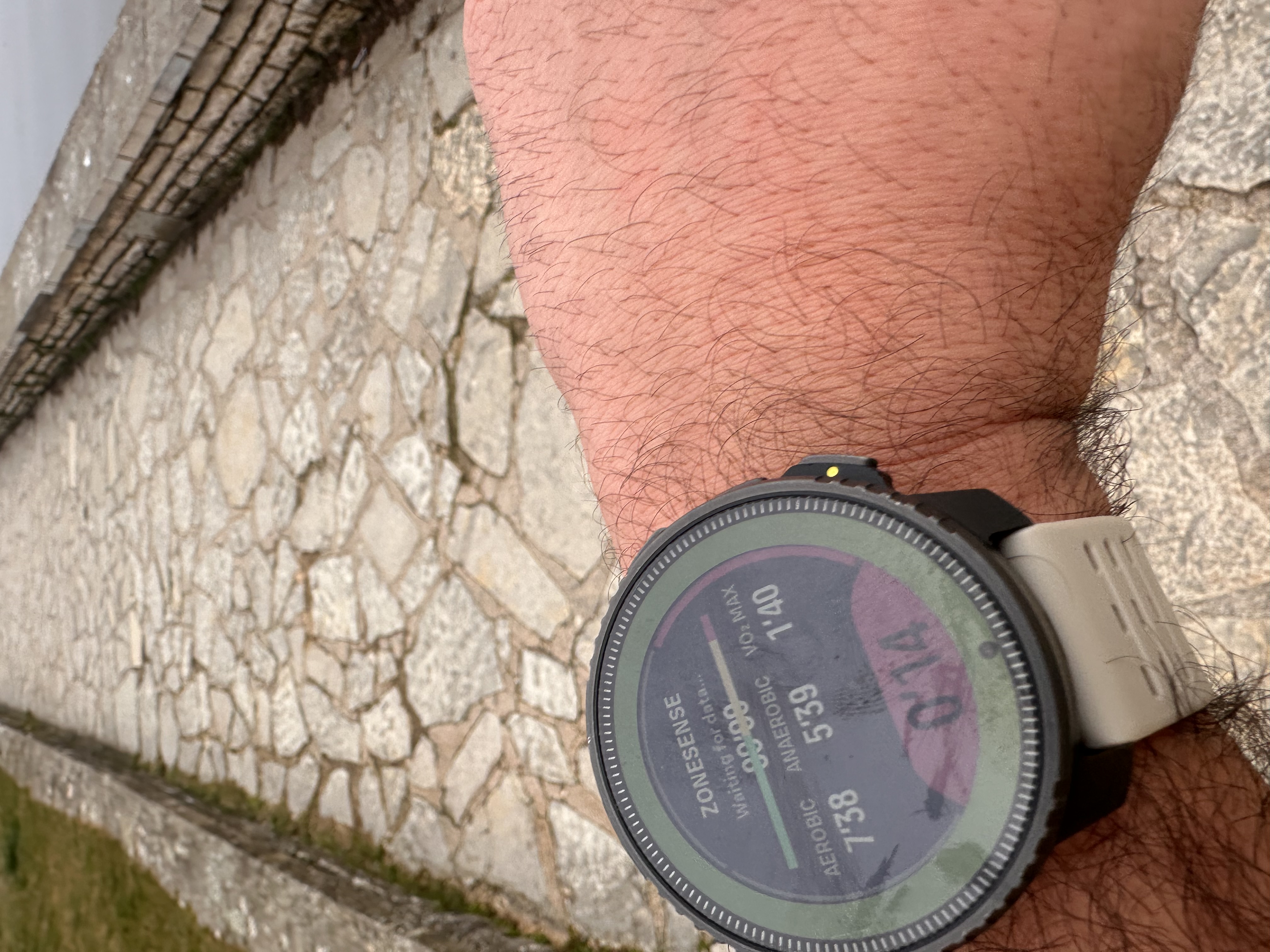
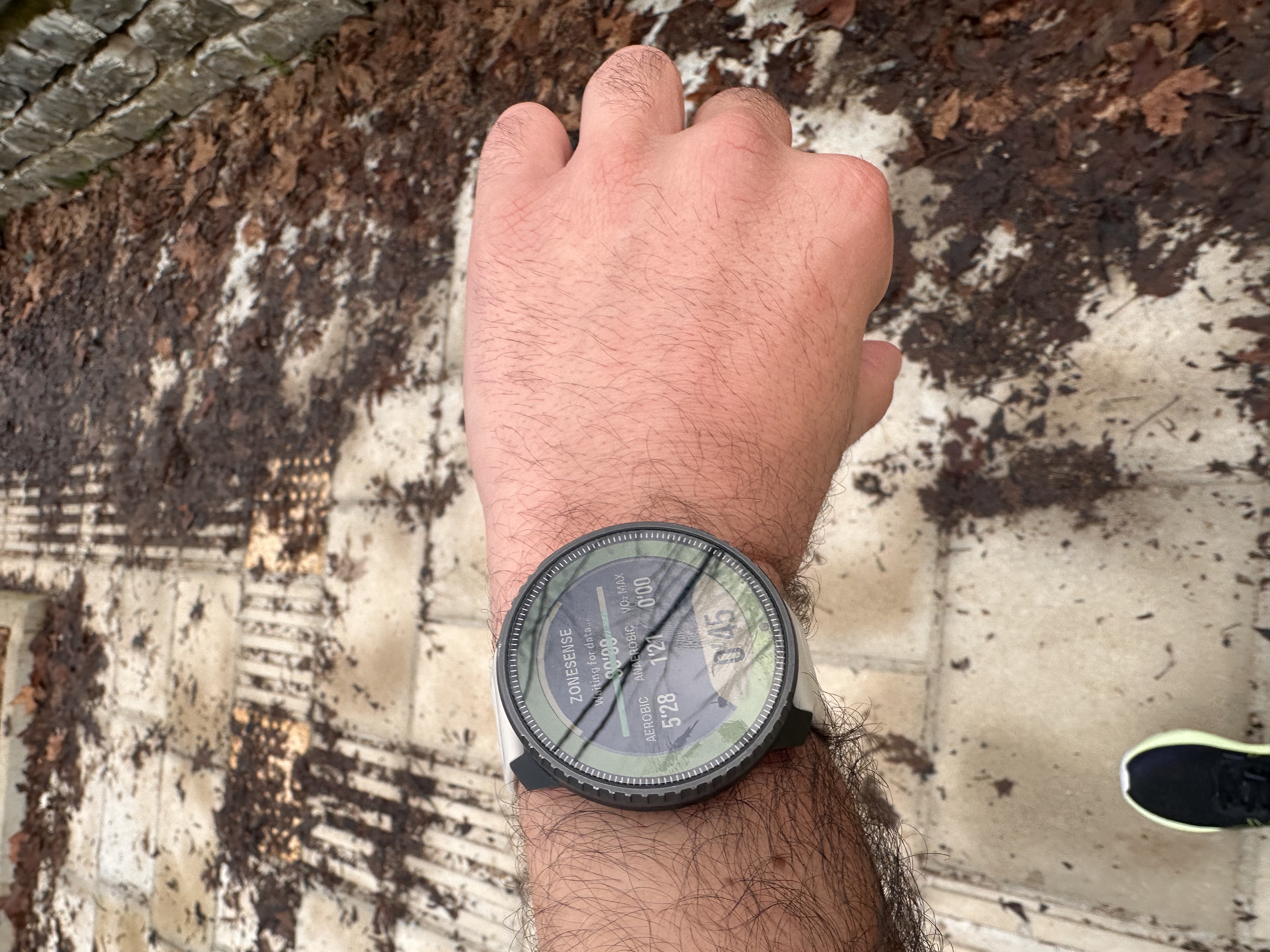
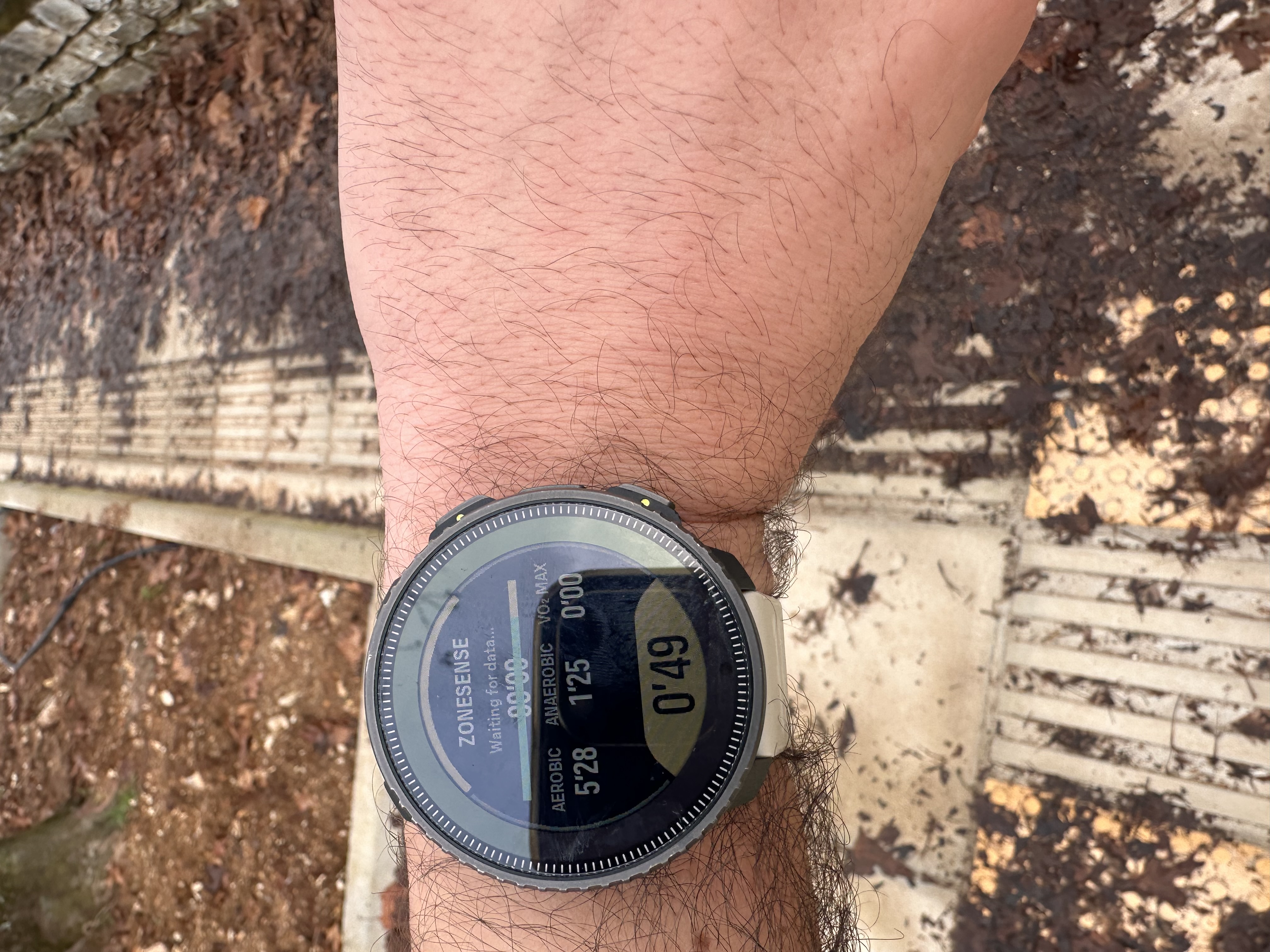
While the app seems to be running it also shows waiting for data
Also the there is a big difference in the data in the watch ( eg I had some 5-6min the red zone ) while in the app the duration is 0
Same here. On the watch it seems to work as expected but in app total different and nonsense. Maybe I dont get it right but, if this should be real time effort monitoring then what is post workout analysis for? At least it must be in line. For me real time is real time. One of this is wrong.
I did relatively high altitude hike with nice elevation gain, on the watch there were all three zones divided in thirds - which perfectly sits with my feelings. In the app red zone 0 min. In green zone 3:50 hour yellow 19 min. Hell no
On the same day run in the city with some steep uphills (I wanted push it really hard) Normal zones: zone 5 25%, zone 4 46%, zonesense red zone 1 minute I was in red on the watch most of the time.
I was in red on the watch most of the time.Zone sense is interesting concept but I will use standard zones as rest of the world does. Feel little bit scamed. I see, that lot of respected guys here have it working, but for me it is always very strange especially data in the app. If something is so extremely different you can hadly trust it.
I use brand new Polar H10 and in runalyze I have 0% of anomalies - so data correct.
S9PP and iOS app -
@AntoniusGaius I think earlier posted that there’s an update coming to address the big swings between data displayed on the watch vs post workout data in the app.
Scammed, not sure the right word. This feature didn’t exist previously, if it doesn’t work for you just don’t use it
 (Assuming of course you did not buy your wearable specifically for this feature)
(Assuming of course you did not buy your wearable specifically for this feature) -
@stromdiddily said in Suunto ZoneSense:
@AntoniusGaius I think earlier posted that there’s an update coming to address the big swings between data displayed on the watch vs post workout data in the app.
Scammed, not sure the right word. This feature didn’t exist previously, if it doesn’t work for you just don’t use it
 (Assuming of course you did not buy your wearable specifically for this feature)
(Assuming of course you did not buy your wearable specifically for this feature)I did not, you’re right. But maybe you know that feeling when you get super excited that your favorite sport tester company has something great, that no one else have and you are workihg hard to use it for more then 3 months, you find your SUUNTO belt worn, OK you buy another one from Polar, and still very strange. Absolutely far from what I see on SUUNTO blog screenshots, and some from Brad who has fantastic results with this. Big dissapointment maybe better then scamm.
On the other hand I bought it for working OHR and on my watch it is only usable for sleeping and 24/7 monitoring. In activities total random. And I have third OHR chip in my watch. Thas why I use belt for every activity except walking.
I will give it some more time and chance, maybe some app update will solve it. I still think, that post analysis is in real time effort monitoring an oxymoron.
-
@AntoniusGaius yes, that’s totally fair

I would wait a bit to see if next updates do correct it. You are not the only one that has been reporting this problem so hopefully addressed soon
-
I did several runs and rowing sessions with my suunto watch.
I have observed the following:
As suunto communicates, Zonesense needs the transitions between the different zones in the workout.
Most of the time, when I didn’t get any threshold data, the measurements of my HRV data from the chest strap were very fragmented. I think this is where Zonesense on the watch works less sensitively and uses this bad data and the app then filters it out. This is just an observation, but if I have a relatively clean history of HRV data via runalyze, Zonesense fits quite well.
For example, I had a run yesterday and tried to get into vo2max at the end. I reached the threshold on the watch, Zonesense was in the red zone, fell relatively quickly into the green zone and in the app it didn’t show me any threshold values. The analysis with runalyze then actually showed that the HRV data was simply bad towards the end. I understand that Zonesense needs good HRV readings - if they don’t come or come incorrectly, then the system can’t work.
Suunto should somehow evaluate the quality of the HRV data on the watch / app, so that the user has the possibility to recognize why zonesense does not provide valid data (Attention: Zonesense cannot be displayed because the HRV question segmentation is too high).I will continue to monitor this. I have now used my chest strap with ECG gel. In the cold, this seems to have helped to maintain more constant HRV data.
-
An article in German language, Google translator will do the job for you…

-
Since now my experience with Suunto ZoneSense isn’t super conclusive…
First time today that it slowly begins to be relevant. Today’s training was 3 times a 130m elevation uphill. ZoneSense gave me anaerobic effort for last part of each hill.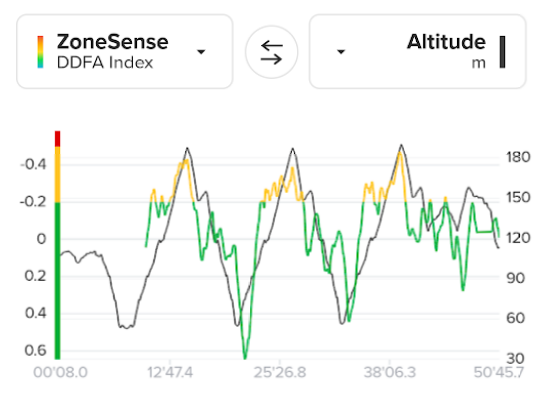
To follow and check if it has finally calibrate to my zones and trainings…
-
I am interested in integrating ZS in my training plans for marathon and triathlon. I have been looking at my ZS data and comparing them with my HR data, focusing on the HR zone 2.
I understand ZS is supposed to be a better indicator than the HR values but I am in struggling when it comes to use ZS instead of the HR zone 2.My question is : I am supposed to train in my HR zone 2, what ZS area I am supposed to target ?
I would say the top of the ZS aerobic but this does not quite match (see picture); my HR zone 2 starts when the anaerobic area of ZS just kicks in.
Should I adjust my HR threshold?
See here a comparison of several trainings, data are stable over time
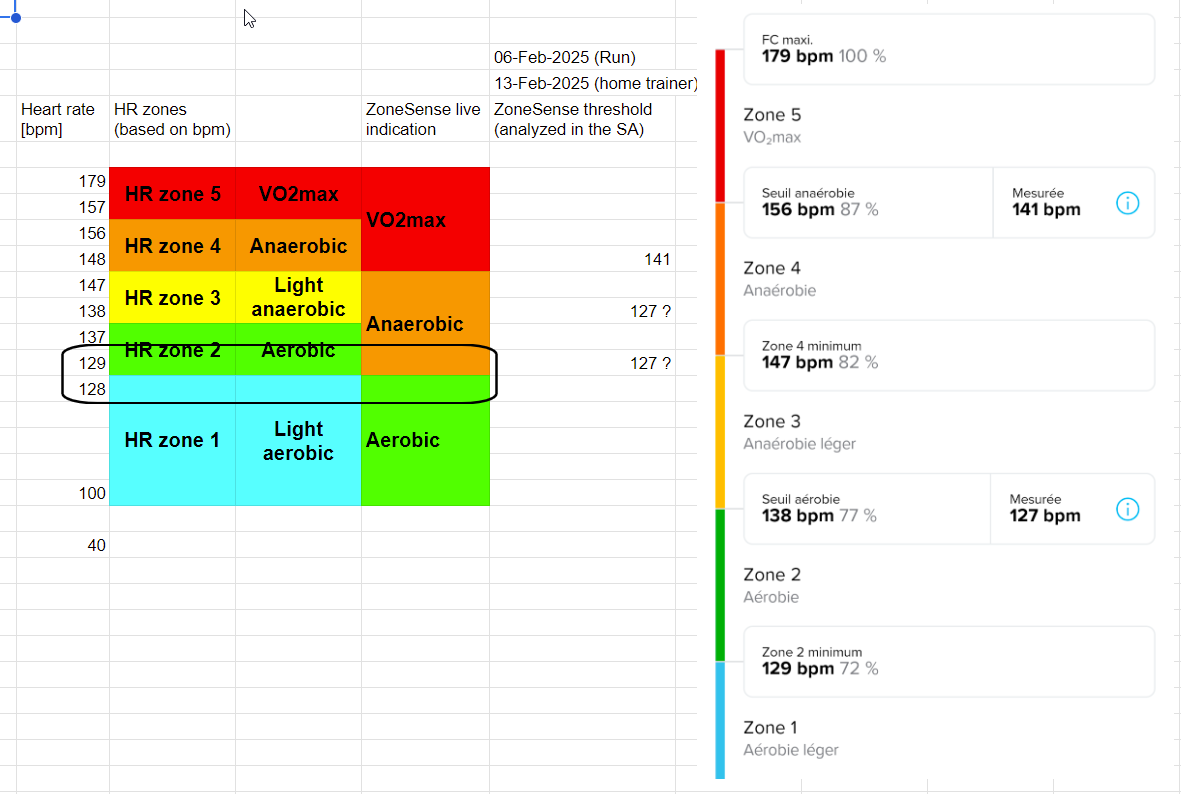
-
@flo7z How many estimates from SA did you take into consideration? I have been using it consistently, and when a threshold is reported, it can fluctuate from 125 to 155 for me.
Other question: how have you estimated your HR zones? There are countless methods available and probably not a single one is really accurate, also defining “accurate” is difficult since your threshold is not the same every day.
After doing mostly aerobic runs since ZS was released and seeing quite different results, I learned to trust my breathing effort more than everything else, if it’s easy then I push a little more even if ZS takes me to the yellow zone. This is highly subjective though. -
Regarding the threshold reported by ZS in SA which is very random - most of my activities don’t show it, some do - something even more confusing that I only now noticed is that I see the value on my mobile app and not on my Mac app, or the other way around, for the same activity.
-
I have stated this before and it is clearly presented in the Suunto videos. ZS is not a tool to set HR values. ZS is a tool to assess efforts for longer intervals and during exercise replacing HR values.
For training ultras where a mix of speed work, tempo and steady-state intervals are done, the general agreement is that HR is a poor indicator of effort. Running on trails presents difficulties not encountered on pavement that include rocks, sand, roots, mud, snow, ice and massive variations in grade accompanied by rocks, roots, sand, mud, snow, ice. For gauging effort in training most individuals use RPE and breathing tests. For short intervals (anything less than about 6 min for me) I don’t pay attention to ZS but anything longer I do knowing that ZS is not instantaneous.
On a Steady State interval of 30 min, which I have today I will keep ZS in the yellow as much as possible, which typically aligns well with my breathing test (on steady state I can say a short sentence or two).
A lot of comments here are too concerned with HR zones and I think for training you can focus on either but not both. (I rarely paid attention to my zones anyway but now I wish all I had for the outer ring was ZS.) Too many comments here are asking about adjusting HR zones with ZS, which I see as meaningless. ZS is most useful in real time, assessing how ZS sets your zones will depend on your recovery, your stress levels, probably food intake and likely others. As @Francesco-Pagano reported I see huge fluctuations in my AT from 120 to 145bpm. It will be interesting to see fluctuations in my LT as I soon have a block of intense intervals coming up. I do not adjust my HR zones because I believe it doesn’t matter.
This is my experience and my opinion from using ZS since last summer and not the opinion of Suunto. -
@flo7z Your screenshot shows the 5 Zones model. As far as I know, Z1 and Z2 in this model are below the Aerobic threshold, which is green in Zonesense.
ZE and Z4 are above Aerobic but below Aerobic threshold. This is yellow in Zonesense.
Z5 is above the Anaerobic threshold. Red in Zonesense.
I never trained for a marathon but I suspect that it should mostly be aerobic. So green in Zonesense.
As @Brad_Olwin stated: Zones and Zonesense are not the same. Use what helps you most.
I can also confirm that the thresholds reported by Zonesense do vary. Across different sports and even across different days.
For example in indoor rowing my Aerobic Threshold is at around 150, while in commuting by bike it is at around 136.